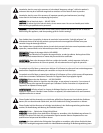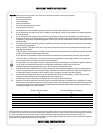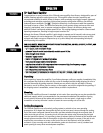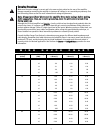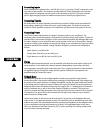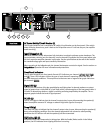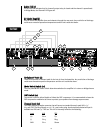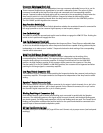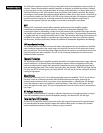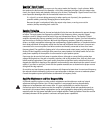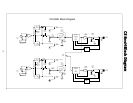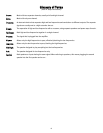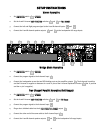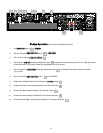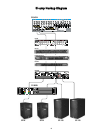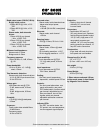
10
The CS 800H incorporates several circuits to protect both itself and loudspeakers under virtually any
situation. Peavey has attempted to make the amplifier as foolproof as possible by making it immune
to short and open circuits, mismatched loads, DC voltage, and overheating. If a channel goes into the
Distortion Detection or DDT gain reduction mode, the speaker load remains connected, but clipping
percentage or output power are instantly reduced. When a problem occurs that causes a channel to go
into a protection mode, the TEMP LED or DC LED for that channel will glow. DC voltage on the output,
excessive subsonic frequencies, or thermal overload will cause the channel’s output relay to
disconnect the speaker load until the problem is corrected or the amplifier cools down.
DDDDTT
Peavey’s DDT compression system allows maximum performance of the amplifier/speaker
combination by preventing the power amp from running out of headrooom (clipping). This
compression system is activated by a unique circuit that senses signal conditions that might overload
the amplifier and reduce the amplifier’s gain when clipping is imminent. The threshold of compression
is clipping itself and no specific threshold control is used. This technique effectively utilizes every watt
available for the power amplifier to reproduce the signal while at the same time minimizes clipping
and distortion, and thus significantly reduces the potential of loudspeaker degradation and damage.
LLFFCC IImmppeeddaannccee SSeennssiinngg
The CS 800H features innovative circuitry that allows safe operation into any load. When an amplifier
sees a load that overstresses the output stage, the Load Fault Correction circuit adjusts the channel
gain to a safe level. This method of output stage protection is far superior to conventional, brute force
type limiting found on other amplifiers. The LFC circuit is sonically transparent in normal use and
unobtrusive when activated.
TThheerrmmaall PPrrootteeccttiioonn
The internal fan will keep the amplifier operating well within its intended temperature range under all
normal conditions. If a channel’s heat sink temperature reaches sufficient temperature which may
indicate an obstructed air supply, that channel will independently protect itself by disconnecting its
load and shutting down until it has cooled. During this time, the channel’s TEMP LED will light. During
this time, the ACTIVE LED will go out, the Temp and DDT LEDs will stay lit and the cooling fan will stay
running at high speed.
SShhoorrtt CCiirrccuuiitt
If an output is shorted, the LFC circuit will automatically protect the amplifier. The LFC circuit senses
the short circuit as an exteremly stressful load condition and mutes the signal, protecting the
channel’s output transistors from over current stress. Approximately 1.5 seconds later, the RampUp
circuit will attempt to return the amplifier to normal operation. If the short is still present, the LFC
circuit will again mute the signal. This cycle of operation will continue until the short is removed from
the output.
DDCC VVoollttaaggee PPrrootteeccttiioonn
If an amplifier channel detects DC voltage or subsonic frequencies at its output terminals, its output
relay will immediately open to prevent loudspeaker damage. The channel’s DC LED will light.
TTuurrnn--OOnn//TTuurrnn--OOffff PPrrootteeccttiioonn
At power-up, the amplifier stays in the protect mode, with outputs disconnected, for approximately
two seconds while the power supplies charge and stabilize. When power is removed, the speaker
loads immediately disconnect so that no thumps or pops are heard.
PPrrootteeccttiioonn FFeeaattuurreess



